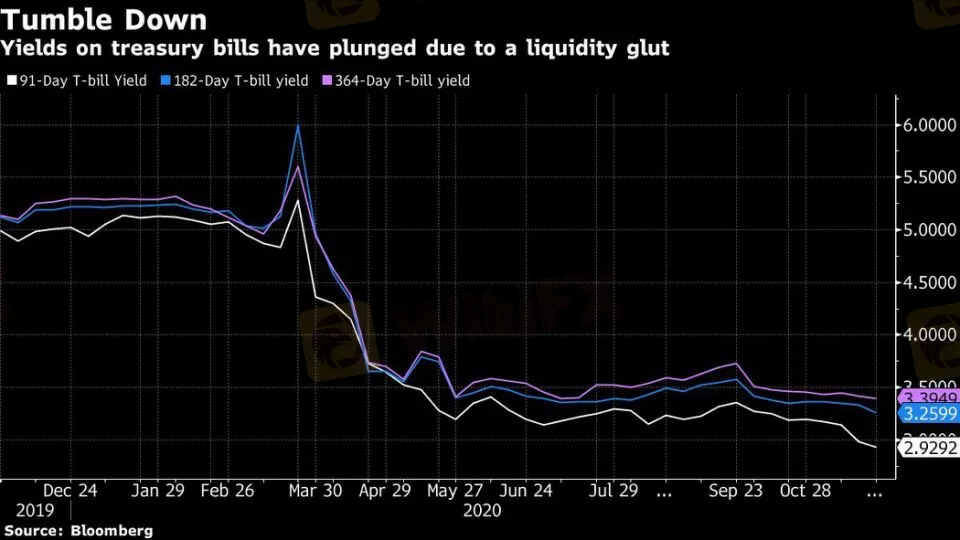A three-month treasury bill was sold at a record low yield Wednesday, while the market repo clocked a trade at 0.01%. Key borrowing costs like the weighted interbank call rate and collateralized money-market rates are way below the Reserve Bank of India‘s benchmark in recent days, indicating investors such as mutual funds are accepting returns lower than what RBI's deposit window would offer banks.To get more news about WikiFX, you can visit wikifx official website.
Governor Shaktikanta Das has pledged to stay accommodative well into 2021 as he tries to dig the economy out of an unprecedented technical recession. But a liquidity bloat is coming from the central banks intervention in the foreign currency market, as it seeks to rein in the rupee and keep exports competitive.
"The RBIs dollar buying to prevent the rupee from appreciating has driven liquidity to a large excess," said Arvind Chari, head of fixed income and alternatives at Quantum Advisors Pvt. "The RBI may have to act to suck out liquidity to maintain the sanctity of the reverse repo rate."
Banks have parked 6.1 trillion rupees ($82.5 billion) of excess cash with the central bank at the reverse repo rate of 3.35%, according to the Bloomberg Banking Liquidity Index. Mutual funds and other such investors don‘t have access to this window, and ICICI Securities Primary Dealership suggests the RBI should consider including them if it's worried about the depression of overnight yields.
"A weekly or fortnightly liquidity absorption window with wider participation could address the skew in excess liquidity and reinforce the reverse repo rate as the floor," ICICI Securities economists including A. Prasanna wrote in a note. "A stronger option would be to introduce the Standing Deposit Facility at a rate slightly above reverse repo -- say 3.5% -- so that money market rates reset."

